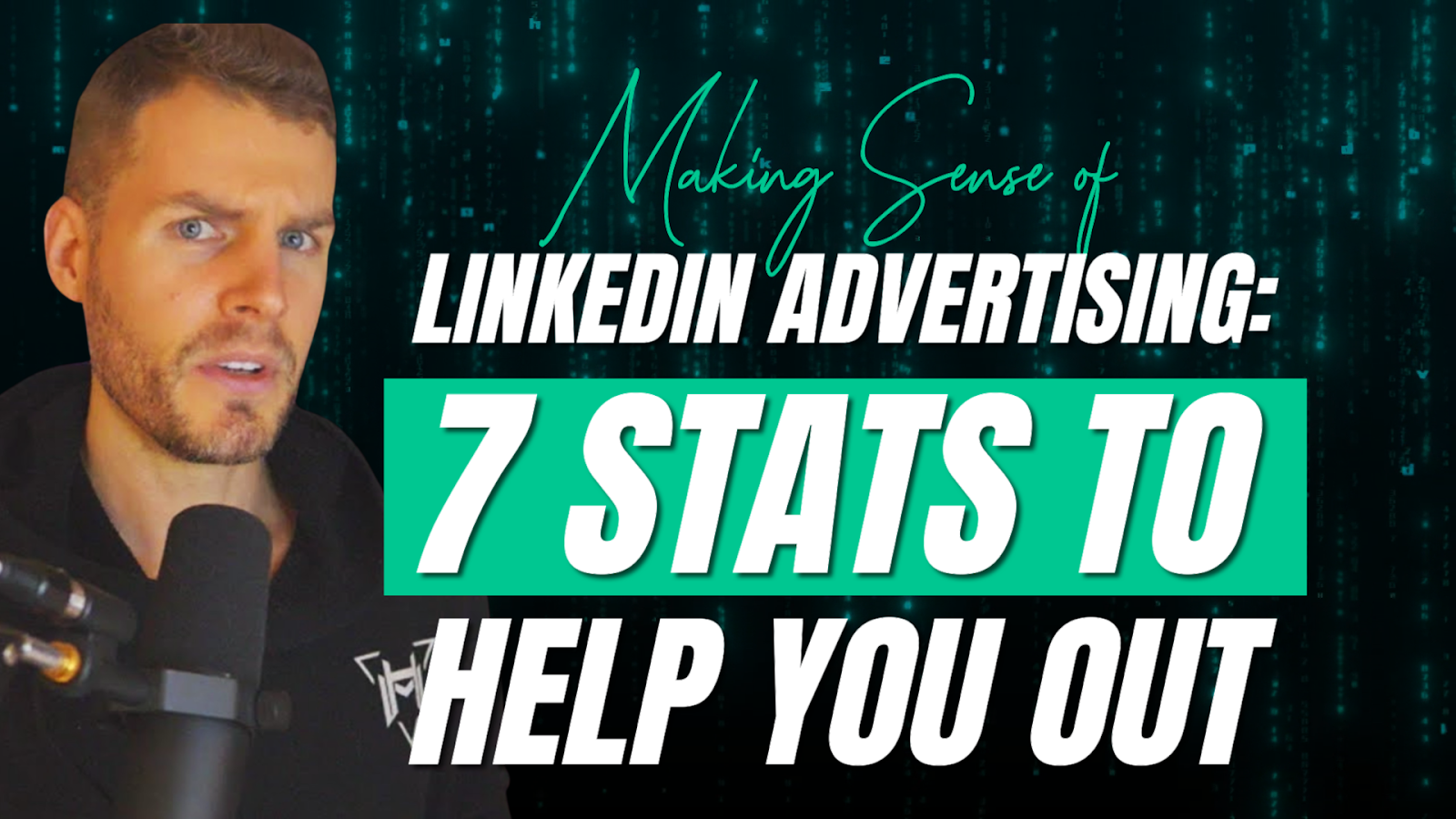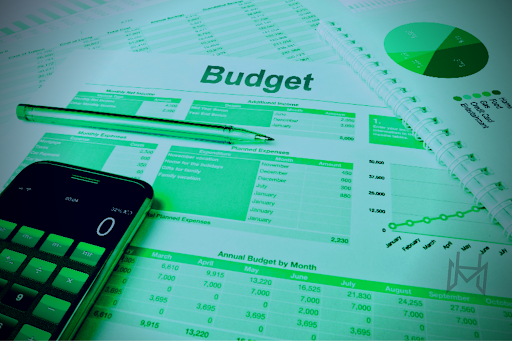
Making Sense of LinkedIn Advertising: 7 Stats to Help You Out
LinkedIn Advertising is a powerful tool for any aspiring professional or business, but can be daunting to get started with. From figuring out who your target market is, to understanding the best strategies for reaching them, there’s a lot that goes into effective marketing. Fortunately, LinkedIn provides us with 7 key stats to help us make sense of it all.

By keeping track of these stats, it’s possible to see where your current LinkedIn Ads efforts are falling short and adjust accordingly. Through this data-driven approach you’ll start seeing results from your campaigns faster and more efficiently than if you were to rely solely on intuition. This guide is going to take you through 7 stats to help you out in making sense of LinkedIn advertising.
1. Sponsored Content
The first stat to keep an eye on is Reach Both Free and Paid Ads Generate page reach – a measure of how many eyeballs saw an ad in your campaign during any given time period – as well as other engagement metrics like impressions, clicks, and post engagement. It’s important to keep tabs on reach because it shows whether or not your ads are actually being seen.
Sponsored content is key to making sense of LinkedIn Advertising. It’s a powerful way to get your message across in a way that’s paid but non-intrusive; it fits naturally into the user experience and doesn’t detract from the audience’s engagement with your brand.
Sponsored content is a form of advertising on LinkedIn, allowing you to share posts and other content with a targeted group of users. These sponsored ads reach a wider audience than organic posts and often result in higher click-through rates and conversions.
When used strategically, sponsored content can be an effective tool for achieving business goals like growing awareness, building relationships, driving website traffic and ultimately increasing revenue. By incorporating visuals, personalizing messages and using analytics to optimize campaigns based on results, brands are able to maximize their effectiveness via sponsored content.
Ultimately, it’s important to understand that sponsored content isn’t a one-size-fits-all solution. The success of this marketing tactic depends heavily on carefully planned out strategies that include research, optimization and monitoring ROI. With proper execution, sponsored content can be an incredibly beneficial component of your overall LinkedIn Ads strategy.
2. LinkedIn ad formats
Learn about LinkedIn Ad Formats for maximum success! With more than 610 million users, including decision makers and leaders from a wide range of industries, LinkedIn has become an attractive platform for advertisers to target potential customers. LinkedIn Ads have four distinct formats: Text Ads, Sponsored Content Ads, Video Ads, and Dynamic Ads.
Text Ads display alongside the sidebar of your LinkedIn feed, while Sponsored Content Ads appear directly in the feed or search results – with videos and gifs included. Video Ads allow advertisers to take full advantage of the visual element with interactive content; while Dynamic Ads are constantly updated ads that use customer data points to automatically target relevant audience segments. Each of these formats offers unique opportunities and advantages to help you reach your advertising goals.
Get creative and make sure you understand how each one works best in order to take full advantage of LinkedIn Advertising!
Also, no matter which type of LinkedIn Ad you’re using, understanding the best practices to get the most success from your ads is essential. Before launching any ad, create an advertising schedule and budget, research audiences and analyze user data to create custom-tailored campaigns. Make sure ads are creative, relevant, and mobile friendly, as more than half of LinkedIn Ads today come from smartphones and tablets. Optimize for performance with split tests by running A/B testing for different audience segments or objectives to identify what works best for a particular ad campaign.
Remember to time your campaigns correctly – targeting key decision makers at their ideal time to be reached is important. As viewers have short attention spans when it comes to social media content, ensure the visuals used stand out among the crowd with strong headlines that drive results! To give your ads even more impact, use powerful retargeting options available on LinkedIn Ads – target customers who have already visited your website or viewed a certain product page with Dynamic Ads. Lastly, track ROI metrics like clickthrough rate (CTR), cost per lead (CPL), cost per click (CPC), and video views to measure the success of LinkedIn Ads before you consider scaling the campaigns further.
3. Choose the right content

Content matters when it comes to LinkedIn Advertising. It all starts with having the right words and a powerful message. A well-crafted message that evokes emotion and delivers clear calls to action is key.
Plus, your content must align with LinkedIn’s rules and regulations as well. The ad needs to capture attention within milliseconds, grab potential buyers’ attention, engage their hearts and minds and make them take action without fail.
It’s important to be selective with the kind of content you choose for your LinkedIn Ad. Quality visuals can do wonders if they work in tandem with the right messaging, captivating audiences and leading them down the funnel towards conversion. That’s why choosing the right content is so essential – It’s your ticket to success!
What Makes Quality Content for LinkedIn Ads?
Quality content for LinkedIn Ads requires careful consideration. It must be able to grab attention quickly and deliver a clear call-to-action in an engaging and emotion-evoking way in order to drive conversions. Moreover, it needs to abide by all of LinkedIn’s rules and regulations. With the right words and powerful visuals working together to create synergy, you can create deep, compelling ads that capture your audiences’ attention and drive them down the funnel towards conversion.
Selecting the best content starts with knowledge of your target audience – determine what interests them, what kind of visuals might grab their attention, and if any special language or tone will make them want to click on your ad. Good quality visuals are just as important as good written words; make sure that whatever image or video elements you select works with the overall message you are trying to convey. High quality images that accurately display the product or service can increase engagement levels significantly. Animations can also be effectively utilized, offering users creative ways to explore your site further without taking up too much space on your page.
In order for content to have a lasting impact on an audience, it needs to be more than just eye-catching and well written; it has to accurately reflect who you are as a business as well as appeal to user’s tastes and address potential issues they may have with your product/Service offerings. With the right combination of informative copywriting and captivating visuals, businesses can create remarkable LinkedIn Ads that perform far better than average ones – propelling customers further down their sales funnel towards conversion!
4. Set your budget and schedule

Setting your budget and schedule is the first step to successful advertising on LinkedIn. Before setting yours, you need to identify which type of ad will serve your purposes best. Once you know this, decide how much money you’re willing to allocate towards it and when is the right time to post.
Frequent posting is key to making sure your message gets seen. Whether that means daily, several times a week or even just once a month, find what resonates with your audience and post consistently. Don’t forget to keep track of your posts so you can measure the reach of each one and adjust as necessary over time!
Establishing a budget and timetable is the initial step in successful advertising on LinkedIn. Before setting it, one must determine which type of ads will be most suitable for the desired objectives. As soon as this is decided, set aside an amount and estimate when would be a good time to post the ad.
Finally Conversion Tracking allows businesses to monitor when someone has taken specific actions associated with their account such as registering for an event, downloading a white paper! By monitoring conversions closely companies will be able to measure return on investment (ROI) more accurately as well craft better ads based on performance data such as negative/positive feedback received after every marketing campaign launch!
5. Cost-Per-Click
Cost-per-click (CPC) is an important statistic for understanding the success of your LinkedIn advertising campaigns. With CPC, you can accurately evaluate the profitability of each campaign and make sound decisions about where to focus your energy and budget.
By measuring how often someone clicks on your Ads, and the total cost of those clicks, you can see which ads are driving the most traffic to your site or landing page. That information helps you know exactly how much it costs per click, so that you can manage your budget more effectively and possibly even reduce costs if necessary.
Knowing your cost-per-click is essential for understanding how effective your ads are and where to target them for best results. This can help you increase efficiency in order to maximize ROI, lower CPMs and more accurately allocate funds across campaigns. Advanced tracking capabilities such as CPC also make it easier to analyze the performance of specific copywriting elements or graphics in order to optimize each ad’s reach while keeping expenses in check.
Ultimately, Cost-per-Click (CPC) enables marketers to understand how much money was spent for each click generated in response to their campaigns — both on free and paid advertisements — making it one of the most important metrics for analyzing how effectively an advertising budget is being used.
6. Choose your target audience

Audience insights can be found right in the heart of LinkedIn Ads Manager. They have a lot to offer you when it comes to digging deep into your target audience and understanding them better.
These insights provide detailed demographic information about your audience, such as age, job title, company size, and more.
They also allow you to uncover deeper trends behind their interests, including top topics they follow and areas they engage with on the platform.
Plus, you’ll get stats that help identify which platforms drive the most outcomes for your ads.
You can also leverage our Audience Insights tool to monitor how audiences are engaging with different campaigns and segments over time.
This is handy for tracking performance over duration and making sure that your message speaks to customers where they’re at directly.
Usually, engagement Rate stat measures the percentage of people who’ve interacted with the content in an ad (i.e., liked or commented). A high engagement rate means that those who have served ads made an impression on those they reached through their campaigns — a top priority for generating awareness about any product or brand.
Lastly, if you’re curious about regional or international behaviour trends – Audience Insights is there to help too! With all these stats at your fingertips you can make sense of LinkedIn Advertising quickly and easily.
7. LinkedIn Targeting Options
LinkedIn targeting options provide an invaluable snapshot of potential ad audiences. With the ability to target by job title, company size, industry and location, users can craft vivid portraits of those they’d like to attract with their ads.
By giving you access to detailed information about the people that use LinkedIn, it arms you with the stats and facts you need to get your messages seen by exactly who you want them to be seen by.
The beauty of LinkedIn’s targeting is that you can reach highly-targeted audiences quickly and efficiently on a large scale with relative ease. Plus, you can always adjust your targeting as needed based on performance metrics to keep your campaigns running at optimal efficiency.
It’s also worth noting that data used in advertising campaigns don’t stop at LinkedIn’s targeting capabilities. Additional data, such as interests or past behaviors, can also be gathered from proprietary sources and incorporated into campaigns for even greater refined results.
At its core, effective advertising on LinkedIn comes down to one thing – an ability to accurately target your message, so it reaches the right eyes and ears at just the right time. There are no exact formulas for how best this should be done, but leveraging insights provided by LinkedIn’s targeted audience list will give any marketer a strong starting point for success.
